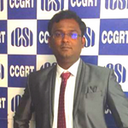Fixed Assets audit is the most significant amount that compares to the other assets based on the balance sheet of the company. An auditor usually audits fixed assets by testing the many audit assertions such as rights, completeness, obligations and valuation.
However, fixed assets are the non-current assets have many benefits for more than one accounting period. Fixed assets may consist of building, furniture, fixtures and other pieces of equipment. Moreover, the procedure of fixed asset auditing for whom have assets to last more than one year. It is the primary resources for the business.
Audit Procedure for Fixed Assets:
The fixed assets balance is the stable balance which can't easily be converted into the cash. It is a primary resource, and you need to pay thousands of dollars every year. Moreover, it also increases the chances of misplacement and undocumented assets. It usually is large as compared to other assets such as current assets. That’s why it considered being a sensitive part of the audit procedure. The following are the essential points for audit procedure on fixed assets.
Description of the assets
Classification of Assets
Purchase Cost
Rate of Depreciation
Details of revaluation
Rate of depreciation
Depreciation for the current year
Accumulated Depreciation
Description of Manufacturer and Serial Number
Understanding the Control on Fixed Assets:
Control on managing the fixed Assets
Better internal control over fixed assets
Understanding critical areas like CAPEX budget preparation and authorization
Control the payment on receiving assets from suppliers.
Control on Financial statements
Types of Fixed Assets Fraud:
Theft of standard disk driver, computers and other business of equipment
Acquisition and disposal
Misrepresentation of Assets value
Accounting Procedure for Fixed Assets:
The most fundamental part of a fixed asset audit procedure is establishing the existing assets. However, the auditor may physically oversee the inventory procedure in forensic audits. The current assets will verify with the determination of acquisition cost, invoice cost, tax paid is established according to Generally Accepted Accounting procedure (GAAP). Moreover, when the asset is sold on fair prices in the market and needs to set the company's record.
Depreciation in Fixed Assets:
The person who got an asset acquires the appropriate depreciation schedule. Tho common fixed asset is not depreciated land. Somehow, a business owner may feel that depreciation schedule on real estate is arbitrary, yes its right for the building’s probable current market value.
The depreciation on fixed assets is a straight line, according to the depreciation method. The straight-line deduction is a reduction on some assets for every year.
Assertion for Fixed Assets:
Existence
Rights and Obligations
Valuation
Presentation
Disclosure
Completeness
Inherited Risks for Fixed Assets:
The most general inherent risk for with fixed assets is the valuation of the assets. However, it needs to focus on testing any external valuations during the year whether the values appear on given assets under certain conditions.
However, fixed assets are hazardous area to pay attention to client's management who is not interested in identifying and writing the value of investments. The assets record does not exist at the reporting date, which causes fraud or theft.
Fixed Assets Addition:
Select a sample of fixed assets
Check and verify for the addition of adequately recorded the fixed assets.
To ensure that they meet the capital condition.
Verify the documents such as purchase agreements, vendor invoices and titles.
Conclusion:
In last, I will tell you that audit procedure for fixed assets are a crucial part of any business owner who has assets. The audit procedure should be strict for fixed assets due to facing many frauds. For this, you need to verify the documents, details of revaluation, serial and model number for your fixed assets. Hence, an audit procedure is required for fixed assets.
Drafted By:
CS.A.Maniraj.,B.Com.,ACS.,CA(Fin), Independent Director
Certified CSR Professional., Certified GST Professional.
Fixed Asset Audit Process and Procedures (Accounting Standard AS10)
asset audit
1 March, 2024
by
 | No comments yet
| No comments yet
marks india, Maniraj Anantham
in GUIDE
marks india, Maniraj Anantham
1 March, 2024
Tags
Sign in to leave a comment
Your Trusted Partner in Income Tax & CA Services
1. Income Tax Compliance & Advisory
Income Tax Return (ITR) Filings for Individuals & Businesses, Advance Tax Calculation & Payment Assistance, Tax Planning & Optimization Strategies, TDS Compliance & Return Filings.
2.Own Accounting Software: "Accounts Robo ERP"
CRM, Sales, Billing, Accounting, Managing Projects & Inventory, HRMS, Website, and more!
Why Choose Us?
✅ End-to-end support | ✅ Expert guidance | ✅ 100% compliance
File Your Tax Return Today

# No Hidden charges